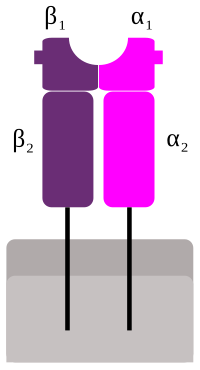
Photo from wikipedia
Genomes of metazoan organisms possess a large number of genes encoding cell surface and secreted (CSS) proteins that carry out crucial functions in cell adhesion and communication, signal transduction, extracellular… Click to show full abstract
Genomes of metazoan organisms possess a large number of genes encoding cell surface and secreted (CSS) proteins that carry out crucial functions in cell adhesion and communication, signal transduction, extracellular matrix establishment, nutrient digestion and uptake, immunity, and developmental processes. We developed the FlyXCDB database (http://prodata.swmed.edu/FlyXCDB) that provides a comprehensive resource to investigate extracellular (XC) domains in CSS proteins of Drosophila melanogaster, the most studied insect model organism in various aspects of animal biology. More than 300 Drosophila XC domains were discovered in Drosophila CSS proteins encoded by over 2500 genes through analyses of computational predictions of signal peptide, transmembrane (TM) segment, and GPI-anchor signal sequence, profile-based sequence similarity searches, gene ontology, and literature. These domains were classified into six classes mainly based on their molecular functions, including protein-protein interactions (class P), signaling molecules (class S), binding of non-protein molecules or groups (class B), enzyme homologs (class E), enzyme regulation and inhibition (class R), and unknown molecular function (class U). Main cellular functions such as cell adhesion, cell signaling, and extracellular matrix composition were described for the most abundant domains in each functional class. We assigned cell membrane topology categories (E, secreted; S, type I/III single-pass TM; T, type II single-pass TM; M, multi-pass TM; and G, GPI-anchored) to the products of genes with XC domains and investigated their regulation by mechanisms such as alternative splicing and stop codon readthrough.
Journal Title: Journal of molecular biology
Year Published: 2018
Link to full text (if available)
Share on Social Media: Sign Up to like & get
recommendations!